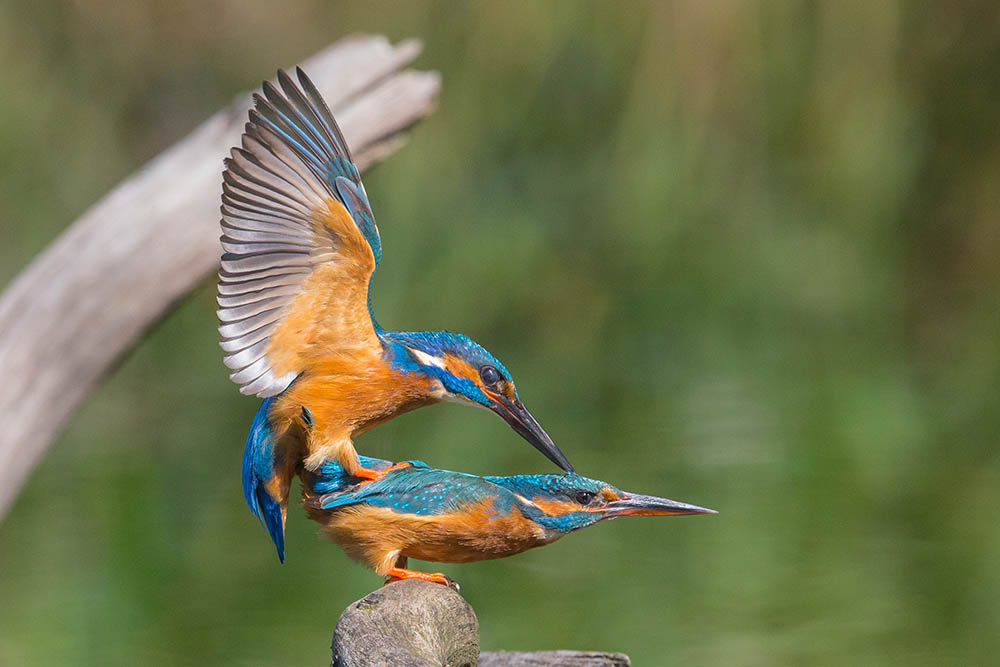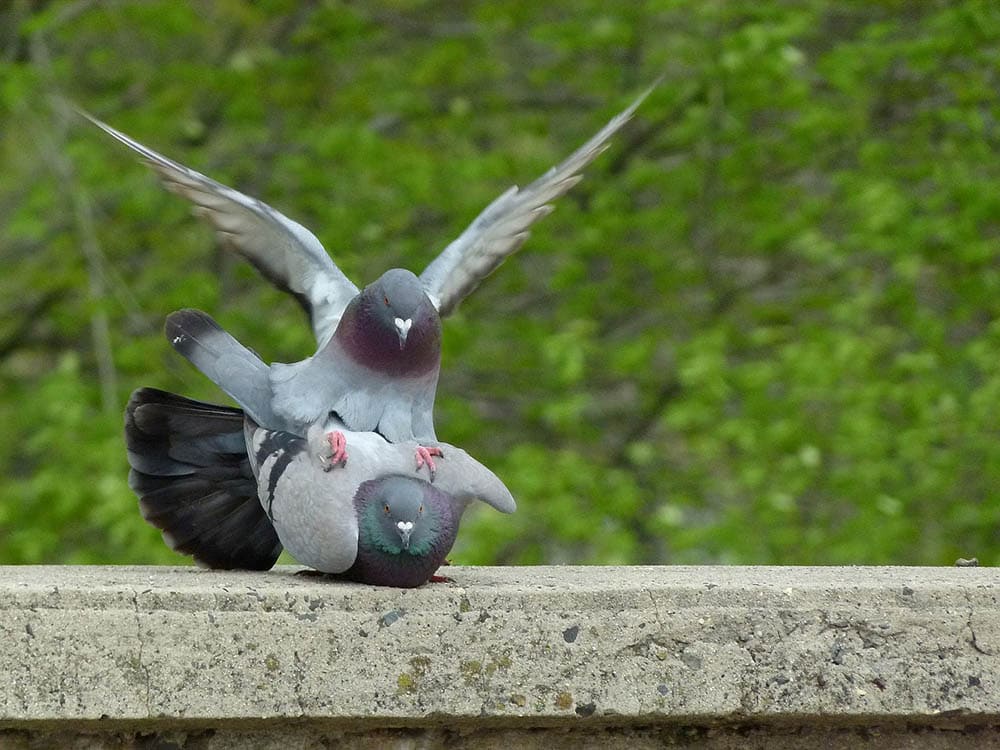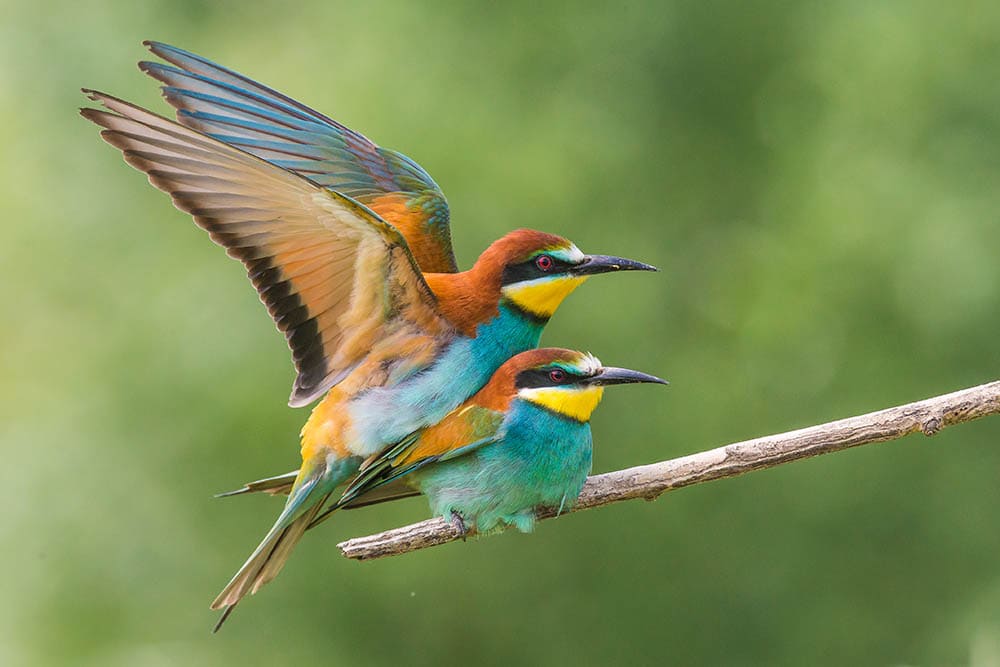Do Birds Mate With Their Siblings? What You Need to Know
Last Updated on

When birdsong reaches a crescendo, typically around early spring, it means that wild birds are preparing to mate. They will lay eggs a few days to a few weeks later, and these will hatch around ten days after that, although the exact times differ by species. Once the chicks mature and are old enough to fend for themselves, they will fly away to find their own mate and start their own brood. At this point, sibling birds do not recognize one another.
With captive birds, interbreeding can be a real problem because the birds do not have a sizeable pool of mates to choose from, so genetically they have no choice but to choose the mate that is in front of them. In the wild, it’s surprisingly rare for siblings to mate. However, it can and does happen, especially as bird habitats are being destroyed so there is less room and smaller populations of a lot of birds.

The Problem of Inbreeding
Inbreeding is considered bad for the development of a species. Genetic defects are more likely to be carried by birds with the same genes. If two birds with the same genetic defects breed, their offspring will likely develop the same defect, and so this continues. The defect gets stronger and stronger and may eventually lead to serious genetic conditions in some species. Research suggests that inbreeding can cause as high as a 75% mortality rate in unborn embryos.

Few Mates to Choose From
However, some birds have little choice but to breed with their siblings. It happens most often in species that are at the greatest risk of extinction and have the lowest number of birds in a very small area. With so few birds to choose from, it increases the likelihood that two siblings, who do not necessarily recognize one another as siblings, will interbreed. Considering interbreeding also causes embryonic fatalities, this means that the numbers will continue to dwindle and the choice of viable mates shrinks even further.
Captive Breeding Solutions
Captive breeding programs aim to remedy or help remedy, this problem by moving individuals from one population of birds to another. This increases the genetic diversity of that population while ensuring that the repopulated birds are unable to breed with their own siblings.
Home Aviary Solutions
If you keep pet birds, interbreeding is a problem that demands your attention. You should remove siblings before they reach the age of sexual maturity, even if you have been unable to effectively determine their gender. Either keep separate aviaries or look for a new home for some of your birds, to prevent interbreeding.

Related Read: When Do Birds Breed and Why? Everything You Need to Know!
Do Birds Mate With Their Siblings?
Interbreeding is a problem for any species, but it is especially prevalent in those species that have dwindling numbers in a confined space. It means that health defects and other genetic defects are more likely to be passed on from one generation to the next. Keep siblings apart before they reach sexual maturity, if you keep pet birds at home, as this will prevent siblings from mating. Wild birds rely on natural avoidance or breeding programs that separate at least some birds from their siblings.
Featured Image Credit: W. de Vries, Shutterstock
About the Author Robert Sparks
Robert’s obsession with all things optical started early in life, when his optician father would bring home prototypes for Robert to play with. Nowadays, Robert is dedicated to helping others find the right optics for their needs. His hobbies include astronomy, astrophysics, and model building. Originally from Newark, NJ, he resides in Santa Fe, New Mexico, where the nighttime skies are filled with glittering stars.
Related Articles:
How to Clean a Refractor Telescope: Step-by-Step Guide
How to Clean a Telescope Eyepiece: Step-by-Step Guide
How to Clean a Rifle Scope: 8 Expert Tips
Monocular vs Telescope: Differences Explained (With Pictures)
What Is a Monocular Used For? 8 Common Functions
How to Clean a Telescope Mirror: 8 Expert Tips
Brightfield vs Phase Contrast Microscopy: The Differences Explained
SkyCamHD Drone Review: Pros, Cons, FAQ, & Verdict
